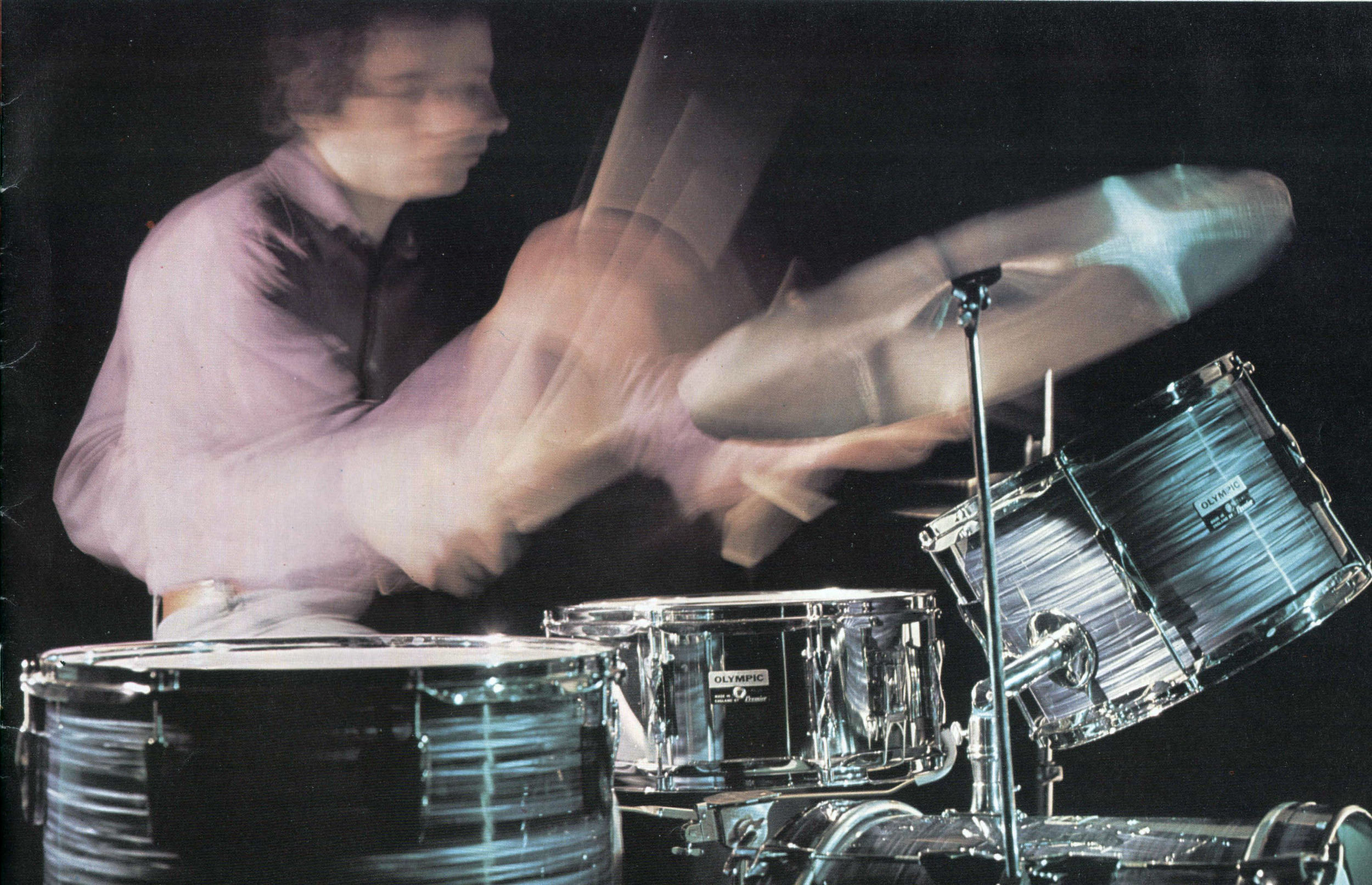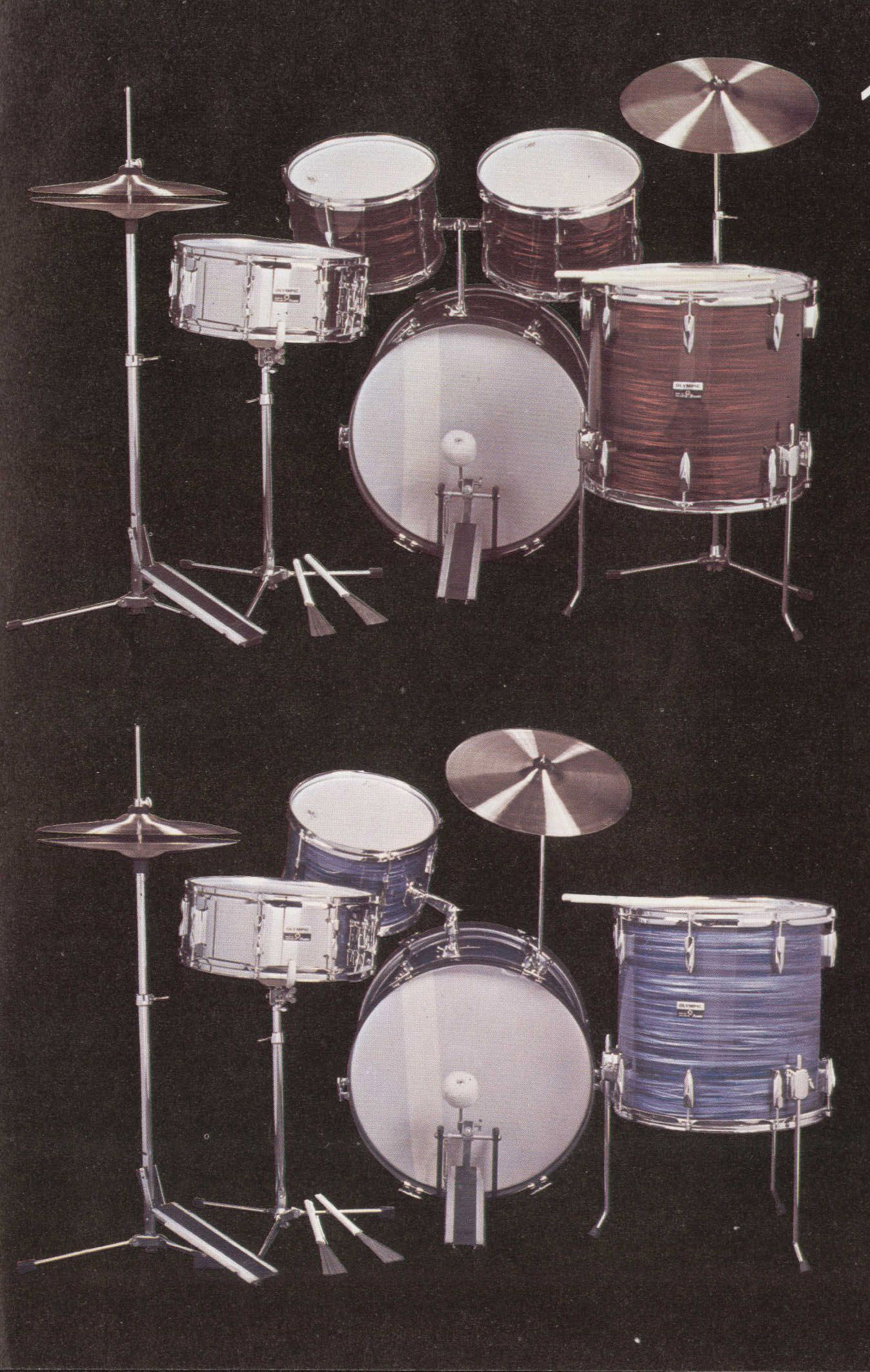English Classics
Olympic by Premier
This month I’m looking at Olympic drums from the 1970s. Marketed by Premier as ‘professional drums at inexpensive prices’ they were always viewed as cheap. Recently, Olympic drums have made resurgence and kits in good condition are steadily rising in price.
While 1960’s kits had oval badges and generally came in a 20/12/16 configuration, by 1971 the badge had become rectangular and the Olympic range offered a better selection of drum sizes and finishes. The ‘Europa’ outfit was hugely popular offering either one or two mounted toms (12x8 & 13x8) albeit from an off-centre tom post mount (with 12” toms and 16” floor toms also available as concert toms). The bass drum featured disappearing spurs and other 60s fittings, but the lug design had been updated. Toms remained with 5 and 6 central lugs and floor toms 8 single lugs top and bottom; snare drums increased to 8 lugs (most 60s models only had 6) as well as the introduction of the chrome plated ‘1005’ metal drum. Built in Premier’s factory in Leicester, most shells were Birch with beech reinforcement hoops, but some kits from the early 70s were African mahogany.
By the mid 70s sturdier Premier Lokfast mounts and brackets were standard (some painted black rather than chrome plated) along with fold out bass drum legs. Sets were available with either one or two toms mounted on the bass drum (which was available up to a 24”). They were marketed in the USA in colours and finishes unavailable here in the UK.
The ‘Super Olympic’ was introduced briefly in 1977 but there aren’t many around; The Super Olympics are the only Olympics to have a 10 lug bass and snare drum and nobody seems to know why Premier decided to market them. They evolved into the first Premier Soundwave kits after a year or two.
By 1978 Olympic drums had followed the trend for plain colours (Red, Yellow, White, Black) but were phased out in 1979, re-appearing in the 80s as the Premier Club.
These drums serve as a great introduction to vintage drums if you’re on a budget as they offer high quality shells in some lovely finishes. Some argue that less metalwork on the shells add to their character and tone (especially the mahogany shell kits). For me their lovely ‘silk pearl’ finishes characterise them, with blue, red and grey the most popular colours to have survived.
Key players: Lots of UK name players began on an Olympic, Larry Mullen JR (U2) being the most famous name that comes to mind. Several name UK drummers and producers have mentioned to me that they have a trusty Olympic set that they regularly pull out on recording sessions, that never record well.







